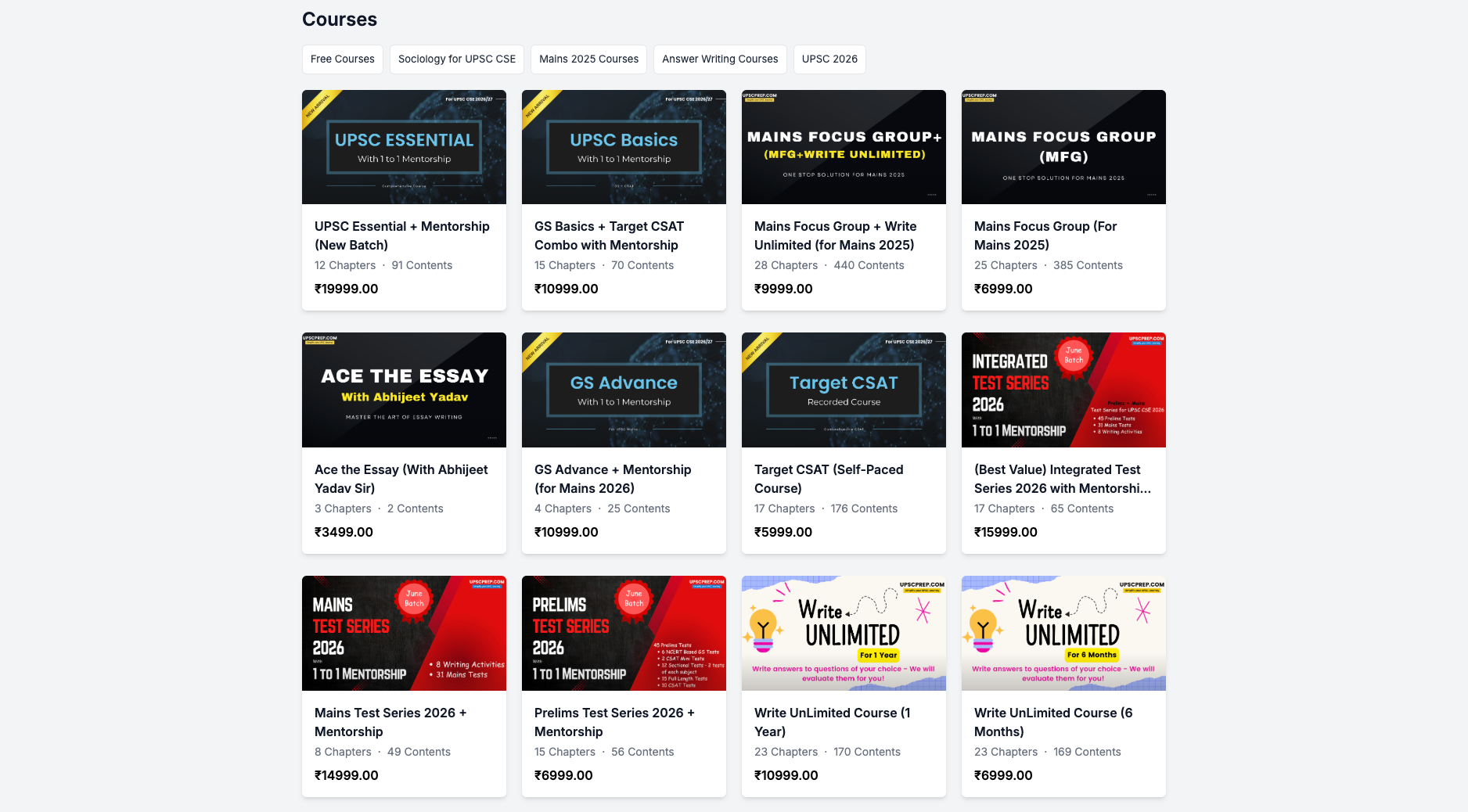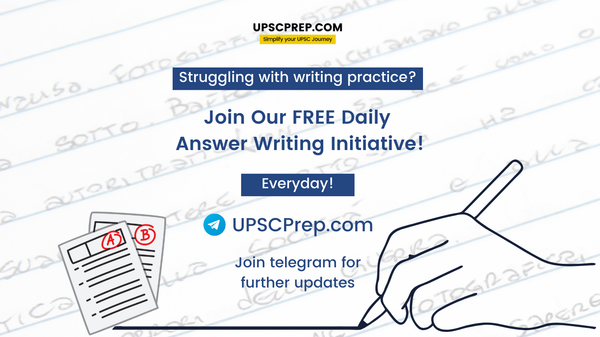Subject: GS 2
Syllabus: Important Aspects of Governance, Transparency and Accountability, E-governance- applications, models, successes, limitations, and potential;
Citizens Charters, Transparency & Accountability and institutional and other measures. Role of Civil Services in a Democracy.
Questions
- What measures does the citizen's charter employ to ensure transparency and accountability within the administration? To what extent has it succeeded in promoting citizen-centric administration? (150 Words, 10 Marks)
- E-governance is an important tool to ensure citizen friendly services in a time bound manner. What are the challenges in e-governance and enumerate a few initiatives taken by the government? (150 Words, 10 Marks)
Model Structure
1. What measures does the citizen's charter employ to ensure transparency and accountability within the administration? To what extent has it succeeded in promoting citizen-centric administration? (150 Words, 10 Marks)
Model Structure
Introduction:
- The Citizen's Charter is an optional and non-binding document that outlines the commitments made by a government organisation to its citizens regarding the services provided to them.
- It includes the organisation's vision and mission statement and aims to promote accountability within the administration.
Main Body
Measures Citizen's Charter employs to ensure transparency and accountability within the administration:
- It sets a measurable standard of service, allowing high expectations from an organisation, and pushing them to work diligently.
- It promotes participative governance by making citizens aware of the aims and goals of the organisation and facilitating a feedback mechanism.
- It makes provisions for the time-bound delivery of services, thus ensuring accountability by cutting into bureaucratic delays.
- It promotes transparency in governance by clearly defining the service delivery process, thus reducing the element of discretion.
- It provides for grievance redressal, thus giving citizens a recourse against poor service.
- It streamlines the service delivery process, making the organisation efficient and cost-effective.
Challenges associated with Citizen Charter:
- The content, language and design are not user-friendly, which makes it difficult to understand.
- Ex. Charters are often unavailable in regional languages, creating a linguistic barrier.
- It is observed that in most cases, the citizen’s charter is not formulated through a consultative process, resulting in a copy-paste charter for every department/organisation.
- The service providers, especially at the cutting-edge level, are not familiar with the philosophy, goals and features of the charter.
- Poor awareness about the charter among the public makes it limited.
- Charters are not updated promptly, failing to reflect the aspirations of the changing society.
Way Forward:
- Consumer groups, CSOs, etc., and stakeholders should be involved at every stage of formulating the citizen’s charter.
- The language and design of the charter should be easily comprehensible. The charter should be made disabled-friendly.
- E.g., the Charter should be brought into the braille system.
- Orientation and training of the staff about the features and requirements of the charter.
- Citizens’ charter should be publicised through hoardings, pamphlets, text messages etc.
- Third-party involvement in assessing the charter and revising it periodically.
- To make the charter more effective, it can be given a binding character through legal backing.
Conclusion:
- The Citizen's Charter reduces the information gap between citizens and the government. To enhance its effectiveness, it is essential to incorporate global best practices and implement the Sevottam model recommended by the 2nd Administrative Reforms Commission (ARC).
2. E-governance is an important tool to ensure citizen friendly services in a time bound manner. What are the challenges in e-governance and enumerate a few initiatives taken by the government? (150 Words, 10 Marks)
Model Structure
Introduction
- E-governance involves the use of internet connection and communications devices which can be portable like smartphones and tablets or non-portable like computers. It is used to deliver goods and services to citizens in an efficient and time bound manner.
Main Body
- It is an evolving area which offers new and innovative opportunities for delivering services with a feedback mechanism. It ensures a participatory approach where services can be customized based on the target audience.
- But due to some challenges, e-governance has not achieved its potential. Some of these challenges are:
- There is less human interaction in the e-governance process due to more mechanization which leads to less value integration and more rule following.
- Lack of digital infrastructure, connectivity and speed issues in rural hinterland and inhospitable terrain is a big glitch.
- Lack of computer literacy is a big issue as the majority doesn’t know how to operate devices to access e-governance benefits. Even if they know, many are not aware of how to use applications and processes to get benefits.
- Efficient e-governance can at times become inefficient due to technical glitches, server issues or poor internet speed.
- Due to rising risks of cyber crimes and data theft, huge amounts of data are at the risk of being sabotaged.
- Government initiatives:
- Common Services Centres
- MyGov Initiative
- National Scholarships Portal (NSP)
- Darpan Portal
- DigiLocker
- National Center of Geo-informatics
- National e-Governance Plan
- Unified Payment Interface (UPI)
Conclusion
- E-governance is the way forward to deliver goods and services to a growing population which is going to surpass China and become the most populated country in the world.

Courses by UPSCprep.com
A comprehensive range of courses meticulously designed to help you cover the syllabus in phases, without overwhelming you with long classes, ensuring you have ample time for self-study.
